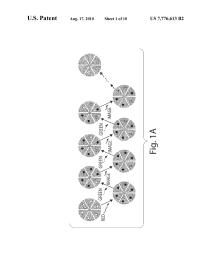Xiaowei Zhuang
"I'm passionate about making scientific discoveries that advance our understanding of living organisms in nature and hopefully improve human health. I love to invent new tools to enable such discoveries."
Xiaowei Zhuang introduced one of the most widely used methods of super-resolution imaging: stochastic optical reconstruction microscopy, or STORM. This technique, which overcomes the diffraction limit of light to produce images with higher resolution than what is possible by conventional light microscopy, is used to investigate biological systems and processes.
Zhuang was born in Rugao, Jiangsu, China, in 1972. Her parents are both professors — her mother in mechanical engineering and her father in fluid dynamics — at the University of Science and Technology of China. In an interview with the National Inventors Hall of Fame®, she said of her parents, “They gave me a lot of freedom.” Spending much of her time reading historical novels, some particularly advanced for her young age, Zhuang strengthened her ability to focus. “If I have something I'm interested in, I can sit there, hours and hours, and not be distracted.”
After earning her bachelor’s degree in physics from the University of Science and Technology of China in 1991, Zhuang came to the U.S. for her graduate studies at the University of California, Berkeley, earning her doctorate in physics in 1996. She then completed a Chodorow Postdoctoral Fellowship at Stanford University in 2001.
She has been with Harvard University since 2001, and is currently the David B. Arnold Professor of Science, as well as an investigator of the Howard Hughes Medical Institute since 2005. “Being a professor [...] gives me 100% freedom to do whatever research I'm interested in doing,” Zhuang said. “So I make discoveries in a way that is entirely driven by my curiosity and interest, and of course, the curiosity and interest of my lab members.”
In 2006, that curiosity led to a breakthrough related to the diffraction limit of light microscopy, which had prevented researchers from using light to differentiate between objects separated by 200 nanometers or less. This method, STORM, allows researchers to look inside cells and see how molecules interact and function with much greater clarity and much more detail. It can produce ultra-high-resolution images of structures that are 10,000 times smaller than the width of a strand of human hair. “Some of our images are really beautiful,” said Zhuang. “You get an artistic satisfaction in addition to the excitement of scientific discoveries.”
With STORM, Zhuang and her colleagues discovered novel cellular structures, such as a periodic membrane skeleton in neurons that consists of rings of a protein called actin, evenly spaced and connected by another protein called spectrin. In 2009, STORM was licensed to Nikon Corp., which introduced its N-STORM microscope in 2010.
In 2015, Zhuang published a new genome-scale imaging method. Multiplexed error-robust fluorescence in situ hybridization, or MERFISH, allows scientists to measure and map the RNAs of thousands of genes in individual cells, identify unknown types of cells, and determine the spatial organization of different types of cells in complex biological tissue, such as the brain. MERFISH is a key technology for the Human Cell Atlas initiative, a global effort to identify all cell types in the human body and map their spatial organization to better understand biology and disease. Zhuang co-founded Vizgen Inc. in 2019 to commercialize this technology, making it broadly accessible to scientists and researchers to advance life sciences and medicine.
Zhuang holds 14 U.S. patents, and her many honors include the 2018 Heineken Prize for Biochemistry and Biophysics, the 2019 Breakthrough Prize in Life Sciences, the 2019 National Academy of Sciences Award for Scientific Discovery, the 2020 Vilcek Prize in Biomedical Science and the 2023 Dreyfus Prize in Chemical Sciences.
Summarizing the motivation behind her ongoing work, Zhuang explained, “I'm passionate about making scientific discoveries that advance our understanding of living organisms in nature, and hopefully improve human health. Importantly, I love to invent new tools to enable such discoveries.”

